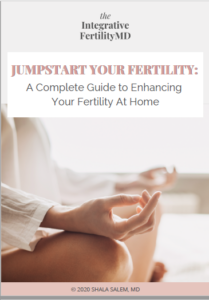Stress. Timed sex. Feelings of inadequacy. Disagreements. Fears. Different coping mechanisms. None of this sounds particularly romantic, right? These are just a few of the obstacles that infertility can add to your relationship with your partner.
What problems may arise? How should you go about addressing them?
You can come out of your infertility journey with your relationship strengthened – but first, you must be ready to tackle the challenges.
Stress
Stress is synonymous with infertility. There are so many unknowns. Often, when a couple is diagnosed with infertility, a baby is something they’ve been trying for and planning on. To first learn that it may not happen – or happen the way envisioned – can be terrifying. Fear and stress go hand-in-hand.
You and your partner are in this together. You decided you want to have a child. You’ve been trying. You may be committed to sticking together through the hard times, and it’s entirely possible to come out of infertility with a strengthened relationship. To get there, you first have to acknowledge the obstacles, and identify ways to overcome them. This is not easy, even for couples with the strongest bond.
Sex and Infertility
You may be trying to conceive by timing intercourse at home on your own, or during treatment with your doctor. Many couples opt to time their cycles so that they are having sex during the woman’s fertile window. A physician can help determine the best timing for intercourse with your partner.
Scheduling sex can be so unsexy. It can begin feeling like a chore. The stress of having to perform sexually when not in the mood can take a toll on either/both partners. This can be an ideal time to seek the help of a mental health counselor to navigate through this.
Especially if you start losing your desire for sex,or feel disconnected from your partner. Know that this is normal and common. It is also something that you can overcome together with good communication.
Disagreements and Fights
When pursuing infertility options, there are a lot of decisions to be made.
- Do you feel comfortable with the treatment options presented to you?
- Do you have the financial means to support your treatment?
- Is it worth taking out a loan for treatment, not having a guarantee it will work?
- What part of your journey, if any, should you share with family and friends?
- Should you seek outside help for emotional support?
The list goes on. You may find that you and your partner have different answers, and that adds stress and tension to your already difficult situation.
Solutions
There is no quick-fix or one-size-fits-all approach to overcoming relationship hurdles. There are, however, things you can do to preserve the strength of your emotional bond with your partner. If you’re trying for a baby, there’s no better time to ensure that you and your partner know and understand each other to the best of your abilities.
Communication is Key
The best tool is communication. As humans, we all handle our feelings differently. Some love to talk about every detail, some don’t want to talk at all. Sharing feelings regarding infertility can be scary – especially to people who manage stress privately. If that’s the case, get creative. Writing letters can be a great form of communication. It gives each person the ability to say everything they need/want, without interruptions. It also allows for time to process what’s being communicated so a thoughtful response can be given, versus a knee-jerk response, helping to limit arguments
Compromise When Possible
Keeping your relationship cohesive may require some sacrifice and compromise. It can be easy to get lost in your own feelings and forget that this is something you are both going through. Try and remember that even if they don’t show it outwardly, your partner is experiencing hardship, too. It’s imperative to find middle ground on things you don’t agree on.
Take a Break
Infertility can be all-consuming. Give yourself permission to take a break and talk about other things. Do things together that take your mind off your fertility journey and bring up topics that make you feel connected to your partner. Watch a comedy together to lighten the mood. Schedule a fun date day or night doing something that you both enjoy. Make an effort to spend time doing something that will help shift your focus away from infertility.
Ask for Help
The emotional toll is something fertility specialists, like Dr. Salem, are very familiar with. Reach out to your physician for mental health resources. They get it. I encourage couples to work with a mental health professional early on in the fertility journey to help navigate the wave of emotions that often come with treatment.
There are also ways to reach support online. Resolve is an organization that provides resources and support related to infertility. There are many individuals openly sharing their journey online. There are also private groups you can join for support as well.
Infertility can be hard on relationships, but if you optimize your communication and accept professional guidance when necessary, you can end your journey feeling closer than ever to the person you love.











